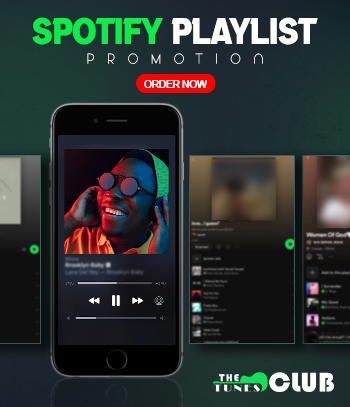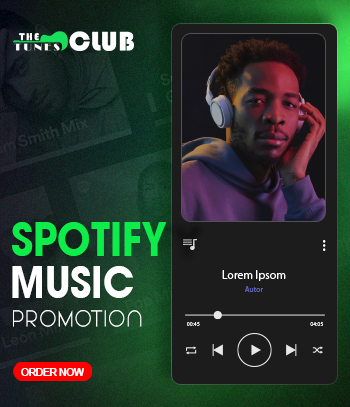Spotify’s Algorithm Secrets: How Does It Work?
24 August 2024
Spotify, the biggest audio streaming platform on the internet, sure has a lot of secrets that maintain its perfect algorithm, database, recommendations, and more.
When Spotify was first launched in 2008, it absolutely revolutionized the music industry with its streaming services. People no longer needed to buy physical copies of their favorite albums, instead, they could use the internet and stream them on Spotify. By 2011, the platform was already a big hit, accumulating 1 million paying subscribers, all across Europe. Now, it has become a staple in everyone's smartphones. This led to the platform gaining a 31.7% market share, absolutely dominating the streaming industry and becoming the biggest audio streaming platform in the world.

Spotify uses a vast database paired with smart algorithms to study its listeners. This database tells the platform about the users' listening habits which in turn, helps the platform detect and recommend the users suitable music, giving the best possible listening experience. However, behind the platform's structure and methods it uses, there are marketing strategies and business models, along with sociological, and psychological principles. These helped Spotify become the biggest streaming platform and continue to reign over the streaming market. So, let's take a deep dive and uncover the secrets that allow Spotify to be both profitable and user-favorite at the same time.
Spotify’s major database: the doorway to listeners’ habits
According to company data, Spotify has seen consistent growth in its active monthly listener count since 2015. As of now, the platform has 615 million monthly active users. This makes Spotify’s database one of the largest on the internet. The database is mostly based on listeners’ activities on the platform.
● Every interaction that is made on the platform is documented, starting from every connection that is made between artists, their records, and any other object. These interactions are documented in Spotify's massive data network and create a global music map for the platform. This map is then used by Spotify to know which songs and artists its listeners would like, based on the type of music they already listen to on theplatform. Not just this, Spotify uses this map to figure out which songs should go together in a playlist as well as in which order they should be played.
● Besides this database, Spotify also uses user information, such as your liked records, which musicians and artists you follow on the platform, which playlists you listen to all the time, and even your physical location too. This combination of details allows the platform to create a high level of personalization which not only reflects in its recommendations, but also displays applicable search results, and even the way of arranging the home screen.
● However, this is not all. Spotify’s analysis goes far, as far as inspecting the sound itself to try to cover all aspects of music. The platform also uses Musixmatch, a music service to analyze the song lyrics. It uses this technology to attach songs that deal with the same subject.
How do music ratings, breakthroughs, and trends work on Spotify?
Spotify has its own internal popularity ranking where you will find songs as well as musicians. The number of plays for a certain period of time is what mostly impacts this ranking. But if you learned anything till now, you must have understood that Spotify is not that simple. To maintain its popularity and reign over the market, it, of course, looks past just the data.
● Spotify’s algorithm does critical monitoring of the data. At the same time, it constantly tracks industry trends. This helps the platform detect a breakthrough from the very first moments. Apart from Spotify’s popularity index, it also uses a variety of other metrics to evaluate the performance of a song, an artist, and a playlist. These metrics include Skip Rate (which is the percentage of jumps per track), Engagement rate, streams, shares, and of course, followers. Additionally, the platform stays always ready for a song’s breakthrough, through a viral sound on Instagram reels or TikTok, at a moment’s notice.
● Sometimes, this starts on Spotify itself when an editor puts a track on a large editorial playlist, causing a speedy rise of musicians into global awareness. This effect only intensifies when listeners join in and participate in the equation. Spotify's algorithm rewards performance and performance only. So, when a song gets into the editorial playlist, it gets more organic streams, which will be pushed further by the algorithm as a recommendation to users to get even more streams. This will create greater exposure for the record, more streams, and more shares, adding to the snowball effect.
● The editorial playlists of Spotify and other music streaming platforms have set new standards in the music world. It is almost like a reputed radio station. When a song goes into an editorial playlist on Spotify, it gets a serious imprint of high quality, even when you don't account for the exposure that was mentioned earlier. Entering a playlist on your own could be a big thing, especially if you are an aspiring new artist or someone who is looking for recognition and establishment in the industry.
The Spotify model: competitiveness, and encouragement
Spotify’s entire model is based on its listeners and humans in general. It uses simple yet effective psychological and sociological principles that are more or less used in every social platform.
● The social features that Spotify uses include healthy competitiveness along with encouragement to connect accounts and playlists with friends and family. The ability to share almost anything that exists within the platform makes it exciting for its users.
● Apart from this, the platform also uses excellent human engineering which is pretty visible in the way songs and artists get recommended on Spotify. One of the most prominent examples of this would be Spotify's Year Wrapped which uses a combination of interaction with content and gameplay. However, all this happens without losing the focus on the primary goal, the music, the central part of the platform's existence.
The popularity that Spotify has today is solely because the platform gives importance to human connection and accessibility. Along with this is the platform's ambition to squeeze every last drop of potential from every field possible, reflecting on its aim to never stop advancing the platform.

